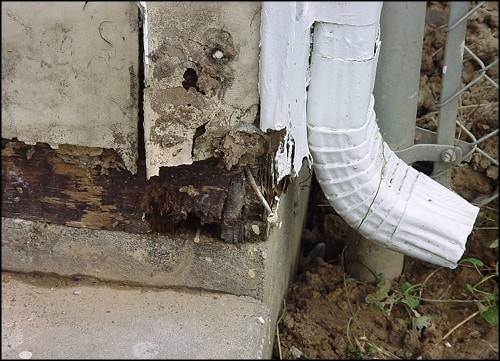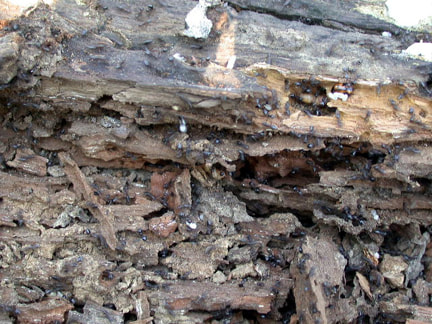|
16/3/2019 0 Comments unwelcome guests: part oneEarly detection and a quick response can protect your home from mold, wood-destroying fungi and wood-boring insects. Mold and mildew can occur in your home at almost any time of the year, if the moisture content of building materials is twenty percent or greater. (You should start to notice mouldy odors.) A good plan of attack begins with decreasing dampness and increasing ventilation. Maintain a negative slope away from your house; and ensure that evestroughing, down-spouts and drains are free of debris, and properly directing water away from your foundation wall.
Wood-decaying fungi attack wet wood, or wood in extremely humid, unventilated areas. They can cause serious damage to wooden structures. To inhibit rot, remove the source of moisture and improve ventilation, the same as for mould and mildew. Wet rot is characterized by dark, spongy wood, and members infested with dry-rot become brittle and cracked. Subterranean termites are found in Southern Ontario and British Columbia, where they feed on wood and can damage houses. Termite colonies nest underground, foraging for wood to satisfy their appetite for cellulose. Termites can travel above ground, and often into houses, via shelter tubes constructed of sawdust and saliva. Termites are similar to ants, but with straight bodies and antenna. Carpenter ants and powder-post beetles are also common in Southern Ontario. They don't ingest wood as termites do, however colonies nesting in wood can cause considerable damage. Look for sawdust and frass (excrement) near exit holes in wood. Carpenter bees are similar in appearance to bumblebees, and nest in exterior spaces such as behind fascia, soffits or other trim. Make your house less accessible, by avoiding wood-earth contact around the house and keeping exterior trim in good repair. Keep shrubbery trimmed back, remove tree stumps and inspect regularly for shelter-tubes or any signs of damage, especially in dark, unventilated areas. Pay particular attention to wooden decks and stairs, and areas where the structure rests on the foundation wall, and especially in crawl spaces or any area with an earthen floor. Probe wooden structures with a sharp tool, as termites often leave no surface indications. Look for shelter tubes, seal cracks in foundation walls and check where pipes enter exterior walls. Termites swarm to create new colonies closer to sources of cellulose; so be on the lookout, especially in the spring, for large numbers of flying insects or discarded wings. If you suspect a colony, especially of termites, contact your local environmental agency, or call a licensed, professional exterminator.
0 Comments
Leave a Reply. |
AuthorGil Strachan is a professional home inspector, representing Electrospec Home Inspection Services in east-central Ontario since 1994. CategoriesAll Appliances Buying And Selling Cooling Electrical Environmental Exterior Health And Safety Heating Home Improvement Home Inspection Insulation Insurance Interior Plumbing Roofing Special Structure Archives
January 2024
|



